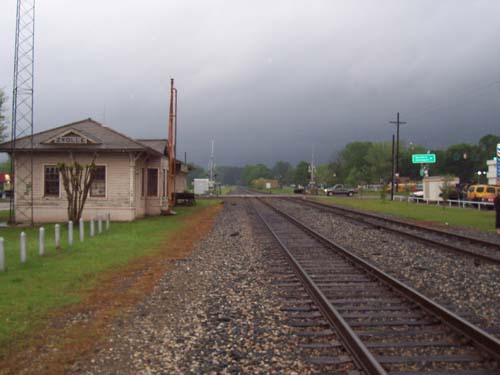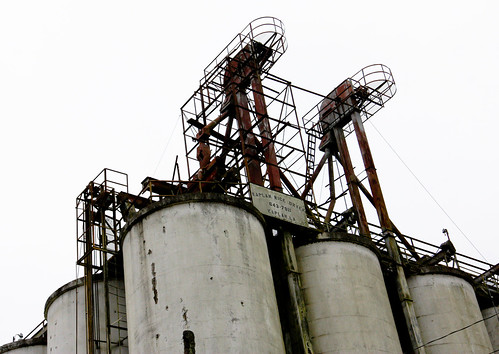Blue Highways: Shreveport, Louisiana
Unfolding the Map
Click on Thumbnail for MapThe last stop in Louisiana is also a moment for William Least Heat-Moon to pause for a few extra days and ponder why he is traveling. But the wide open spaces of Texas beckon, and are coming up next, so he won't give up and neither will we. Click on the map thumbnail to locate Shreveport on our journey, and thanks for traveling with us!
Book Quote
"I called my cousin again, got directions, and drove to her house. The sun was gone when the family sat down to dinner. A pair of heavy moths bumped the screen, and we took barbecued chicken from the platter. It had been a long time since I'd eaten among faces I'd seen before, and I knew it would be hard leaving.
Blue Highways: Chapter 3, Part 14
"....The wanderer's danger is to find comfort. A weekend in Shreveport around friends, and security had started to pull me into a warm thrall, to enfold me, to make the wish for the road a craziness. So it was only memory of times in strange places where the scent of the unknown is sharp that drew me on to the highway again."
Blue Highways: Chapter 4, Part 1
 Downtown Shreveport. Photo on Destination360.com. Click on photo to go to host site.
Downtown Shreveport. Photo on Destination360.com. Click on photo to go to host site.
Shreveport, Louisiana
Have you ever gone to a place and find that you just don't want to leave? Have you ever had the temptation, once you're there, to just chuck everything you're doing and pursue a different life? Does it happen more often when you're with friends and supportive relatives than if you are in a place alone? Or, have you had it happen when, upon staying a few days, you just know that the place you are in is a place that you could stay for a while?
LHM touches upon those feelings in his passages above. Those passages touch me. I have never been to Shreveport, but the feelings of wanting to stay someplace resonate with me. He stayed long enough (a weekend) that I actually marked his stop with a red marker. As I sit down with good friends or family, sometimes I never want the feeling to end.
This happens to me every time I go home to Northern California. Once or twice a year, I arrive at my childhood home, step out of the car, and the low rumbling roar of the ocean assimilates itself into my ears. The air is crisp, sometimes foggy. If it is night and there are no clouds, the stars of the Milky Way are so bright I can almost touch them. The redwood trees stand silent, watchful, brooding. They were standing there long before I was born, they will still stand there long after I'm gone. I walk the bluffs by the ocean, I walk the forests. The place is in my blood and bones, and I'm connected with it. To leave means wrenching myself away, and I am forever wistful about it.
It's hard to explain, this feeling. My wife doesn't quite understand it because she was not as connected to any particular place when I met her. She saw me go home, deal with the dysfunctions in my family (I think that it is rare when there isn't some kind of dysfunction in a family), get angry and frustrated, or sometimes even just go into a shell. This doesn't happen all the time, and I truly love my family, but it happens enough for her to notice. But my connection to place overrides all that.
She began to understand when we lived in New Orleans. We both developed a shared connection to that place, and we go back at least once a year. When we are there, we never want to leave it. We are both just weird enough to be able to live there among the rest of the weirdness that can be found. We love the people we know there. We love the cultural vibrancy, the music in every day, the differentness, the festivals and the general attitude. It is a place made for people who are time-challenged, and we are definitely time-challenged. But hey, when place believes that life should be worth LIVING, not worrying today about petty concerns and things that will be gone tomorrow, then how does time really matter? It is a blow to the gut to get to Louis Armstrong International and step on that plane and go back to our ordinary, by-the-clock and busy lives.
I have felt that connection with Germany also, particularly the Rhine area. I have many friends in Germany - though I've been terrible about keeping in touch with them. I've been there three times, and each time, I feel a connection with place. I don't know if it's the German people, who have a stereotype of efficiency and practicality, but who are very giving and generous. If you become friends with a German, you are friends for life and they will help you with anything at a moment's notice. I don't know if it's the landscape - that unique European feel that is so ancient and reminiscent of the tribal past of the German people, yet modern, shiny and gleaming at the same time. I don't know what it is or why, but I know that I feel comfortable there.
When LHM pulls into Shreveport, and sits down with some family and their friends, and shares a dinner, and realizes that it will be hard to pull away, it is as if I am sitting there with him. We all need touchstones, we all need connection with others. If we are alone on the road, whether it is a physical road and an actual trip, or if we are alone or feel alone on our road of life, that connection to others becomes more important and we treasure it when it occurs. Whether it's a joyous connection, or even a painful one, we still need to touch others and have them touch us once in a while. When that connection is attached to a physical place, we become intricately entwined with it. It will remain with us on the map of our life and the map of our experience.
If you want to know more about Shreveport
Louisiana State University at Shreveport
R.W. Norton Art Gallery
Shreveport.com
Shreveport/Bossier Page
Shreveport-Bossier City Convention and Visitor's Bureau
Shreveport Blog
Shreveport Scene (blog post about Shreveport restaurants)
Shreveport Times (newspaper)
Southern University at Shreveport
The Strand Theater (Official State Theater of Louisiana)
Wikipedia: Shreveport
Next up: Carthage and Mount Enterprise, Texas




 Friday, January 14, 2011 at 1:14PM
Friday, January 14, 2011 at 1:14PM


